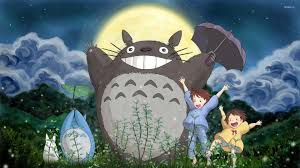Animation comes in many forms. Two of the most popular types are 2D and 3D. Although they both create moving images, they differ in many ways. Let’s explore the key differences between 2D and 3D animation.

What is 2D Animation?
2D animation is flat and two-dimensional. In this style, characters and backgrounds are drawn on a flat surface. Every frame is either hand-drawn or created digitally. Popular cartoons like SpongeBob SquarePants use 2D animation. It is simpler and less detailed compared to 3D.
What is 3D Animation?
In 3D animation, objects and characters have depth. They are created as three-dimensional models in a computer. Animators manipulate these models to make them move in all directions. 3D animation is often more realistic and can show detailed textures, like in films such as Toy Story.
Key Differences in Appearance
2D animation has a flat look. Characters and backgrounds have no depth. The animation feels more stylized and artistic. For example, in 2D, you see bold lines and simpler shapes.
3D animation, on the other hand, creates lifelike objects. Characters and scenes appear real, with shadows and depth. 3D animation is often smoother and more dynamic than 2D. It also shows more detail in movements.
The Process of Creating 2D and 3D Animation
Creating 2D animation involves drawing each frame. These frames are then placed in sequence to create motion. The process is time-consuming but results in simple, clean visuals.
In 3D animation, animators first build models in software. They create a digital skeleton for each model and animate them. The models can be rotated and viewed from any angle. This process can be faster once the initial models are made, but it requires more complex tools.
Flexibility and Creativity
Both 2D and 3D offer unique creative freedom. 2D animation allows for more abstract designs. Artists can easily adjust shapes and colors to create unique visuals.
3D animation, however, provides realism. It allows for lifelike movement and complex scenes. With 3D, animators can explore multiple angles and create environments that look realistic.
Applications in Media
2D animation is often used in cartoons, web series, and mobile games. It’s great for simple, stylized visuals.
3D animation is mostly used in feature films, video games, and high-budget projects. It’s ideal for creating complex, realistic scenes, like in movies such as Avatar. 3D also works well for video games, where players interact with 3D environments.
Cost and Time Efficiency
2D animation can be cheaper but time-consuming. Traditional hand-drawn animation requires many frames. Digital 2D animation is faster but still needs a lot of effort.
3D animation requires powerful software and computing power. However, once 3D models are created, they can be reused in different scenes. This makes 3D animation more efficient for large projects, though it can still be costly.
Conclusion
In conclusion, 2D and 3D animation differ in many ways. 2D is flat, artistic, and simpler to create. 3D, however, is realistic, dynamic, and often more complex. Each type has its strengths, and the choice depends on the project’s needs. As technology advances, both forms will continue to evolve and shape the world of animation.










